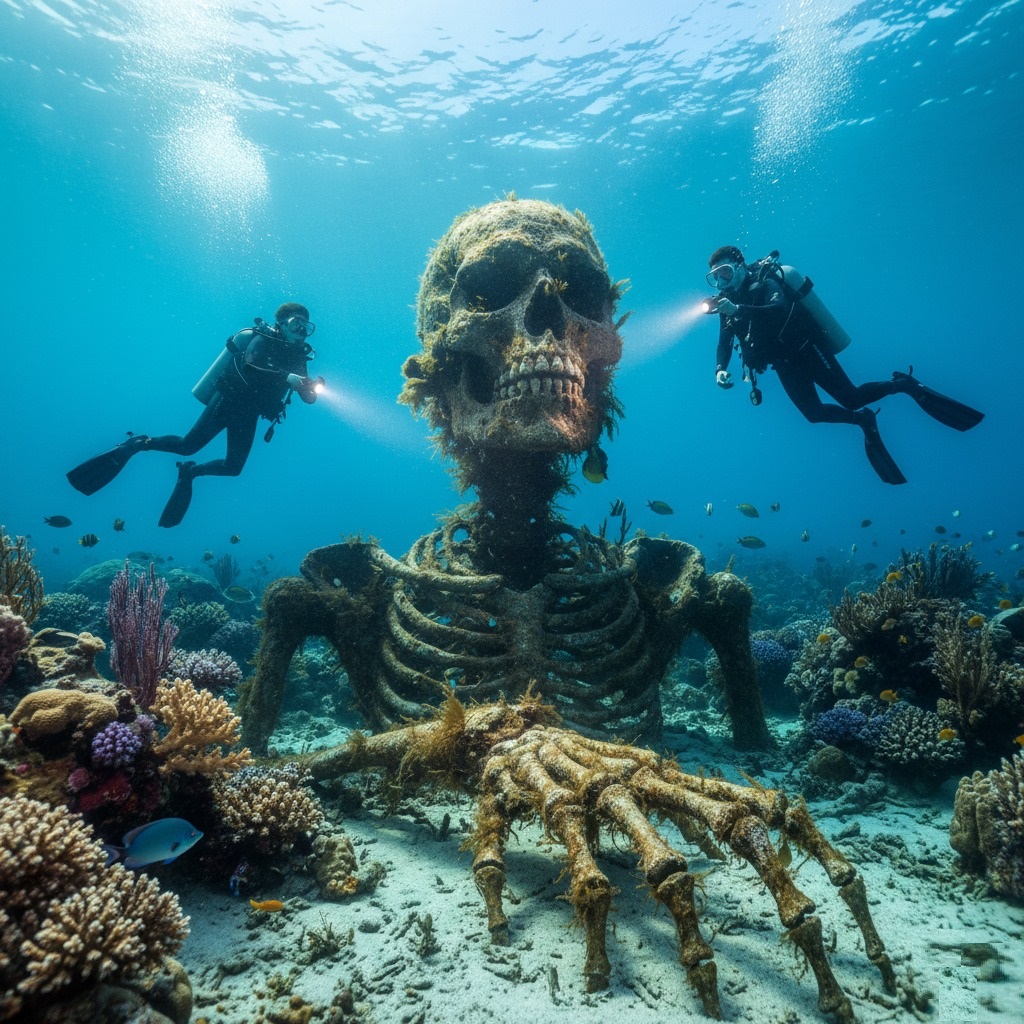The Mariana Trench Colossus: A Subaquatic Archaeological Discovery

The year was 2042, and humanity’s reach had finally extended to the deepest, most mysterious corner of our planet: the Mariana Trench. Dr. Aris Thorne, a marine archaeologist whose career had been dedicated to uncovering humanity’s submerged past, led the “Challenger Deep Initiative.” Their vessel, the Triton’s Eye, was equipped with cutting-edge sonar and remote operated vehicles (ROVs) capable of withstanding the crushing pressure of the abyssal zone.
Their initial mission was to map unprecedented geological formations, but a routine scan near the Sirena Deep, a particularly unexplored section, returned an anomaly. It wasn’t geological; it was… structural. Too regular, too immense to be natural.
“Zoom in on quadrant gamma-seven,” Aris commanded, his voice tight with a mixture of disbelief and surging excitement. The ROV’s camera slowly resolved the blurry outline into something impossible. As the high-intensity lights pierced the eternal gloom, the team gasped. Lying on the silty seabed, partially obscured by eons of accumulated sediment and unique abyssal flora, was a skeleton. Not just any skeleton – a human-form skeleton of impossible scale.
“My God,” whispered Dr. Lena Petrova, the paleobotanist, her usual composure shattered. “It’s… it’s like nothing we’ve ever seen. The proportions… they’re impossibly large.”
The team deployed a specialized deep-sea submersible, the Nautilus, piloted by the seasoned Captain Elias Vance. Aris and Lena were on board, their hearts pounding in unison with the Nautilus’s thrusters. When their submersible finally hovered over the site, the sight was breathtaking and terrifying.
Here, at a depth of nearly 10,000 meters, lay the skeletal remains of what could only be described as a titan. The skull alone was the size of a small car, its empty eye sockets staring up into the perpetual night. Ribs, thick as ancient tree trunks, formed an eerie cage, some sections encrusted with bizarre, bioluminescent organisms. Long, powerful limbs stretched out, ending in massive hands whose bony fingers were partially buried.
“Look at the density of the bone structure,” Aris murmured, running a spectroscopic analysis. “Unlike anything known to terrestrial biology. And the way it’s settled… it suggests it wasn’t placed here recently. This is an antiquity.”
Over the next few months, the Challenger Deep Initiative became the most significant archaeological endeavor in history. They carefully excavated around the “Colossus,” as the media quickly dubbed it. Radiocarbon dating, painstakingly performed on samples retrieved, placed the skeleton at an astonishing 3.5 million years old – predating even the earliest Homo sapiens by millions of years.
The implications were staggering. Was this an undiscovered branch of hominids, evolving in the deepest recesses of the ocean? Or was it something far more ancient, a precursor to life on land, or even an extraterrestrial being that had met its end in the planet’s ultimate grave? The lack of any associated artifacts puzzled them. No tools, no signs of habitat, just the solitary, colossal form.
As they meticulously documented every inch of the find, a faint, almost imperceptible symbol was discovered etched onto a femur bone. It was abstract, geometric, unlike any known human script. Lena theorized it could be a biological marker, a natural pattern, or perhaps – the chilling thought struck them all – a final, cryptic message from a species lost to the abyss, a testament to a forgotten epoch in Earth’s history.
The Mariana Trench Colossus became a global phenomenon, shattering preconceived notions about evolution, history, and the very definition of humanity. It posed a question that resonated across every continent: what other secrets lay buried in the silent, crushing depths, waiting for humanity to finally descend and listen? The trench, once thought to be a barren void, had become the ultimate library, and Aris Thorne knew they had only just turned the first page.
